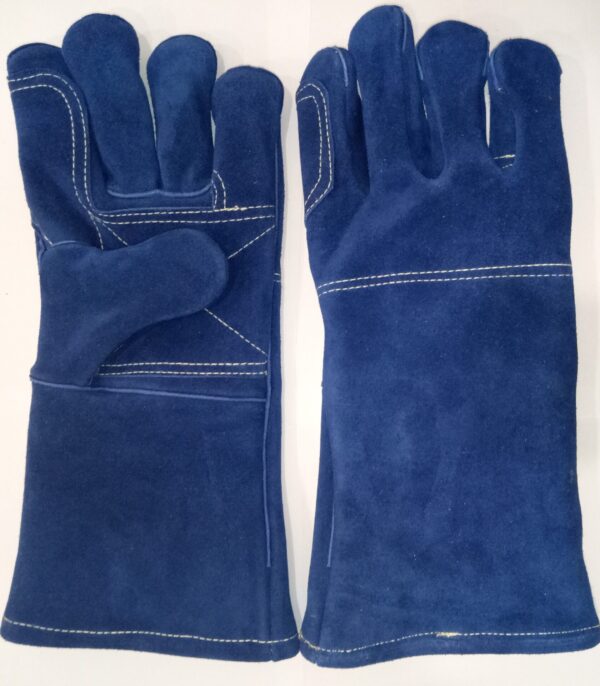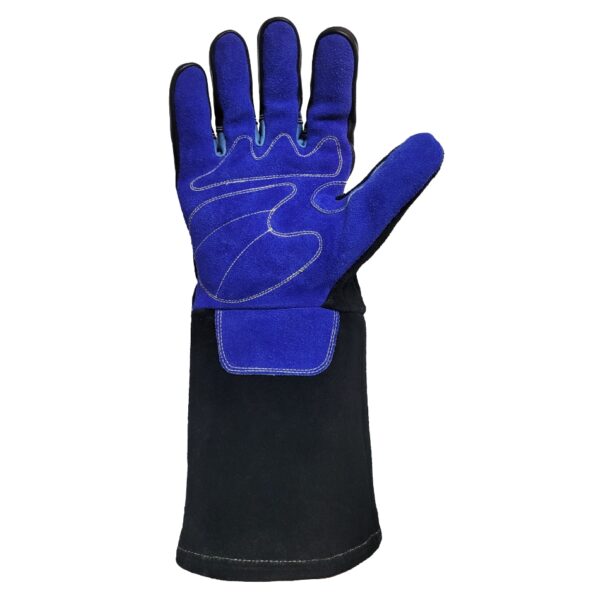Are welding gloves fireproof? This question is of utmost importance to welders who prioritize safety and protection in their work. Yes, welding gloves are designed to be fireproof. When it comes to the intense heat and sparks generated during welding processes, ordinary gloves simply won’t suffice. Welding gloves are specifically crafted using materials that offer exceptional heat resistance and protection against flames.
Are welding Gloves Fireproof | Understanding the Importance
The Hazards of Welding
Welding processes generate high temperatures that can exceed thousands of degrees Fahrenheit. The intense heat, coupled with the presence of sparks and molten metal, poses significant risks to the welder’s hands and arms. Direct exposure to these hazards can cause severe burns, thermal injuries, or even ignite flammable materials.
Importance of Fireproof Welding Gloves
Fireproof welding gloves play a crucial role in safeguarding welders against potential hazards. They are specifically designed to be heat-resistant and provide insulation from extreme temperatures. These gloves serve as a protective barrier, ensuring welders can handle hot materials, sparks, and molten metal without sustaining burns or injuries.
To Get more out of it try reading “what temperature can welding gloves stand with”
Characteristics of Fireproof Welding Gloves
Material Composition
Fireproof welding gloves are typically made from durable materials that offer high heat resistance. Common materials used include leather, aluminized fabric, Kevlar, Nomex, synthetic fibers, and hybrids. Each material offers its own set of advantages in terms of heat protection, durability, and dexterity.
Heat Resistance
One of the primary characteristics of fireproof welding gloves is their ability to withstand high temperatures. They are engineered to resist heat transfer and protect the wearer’s hands from burns. The level of heat resistance depends on the material composition and design of the gloves.
Durability and Flexibility
Fireproof welding gloves need to withstand the rigors of welding environments, which can involve rough handling, abrasion, and punctures. These gloves are designed to be durable, ensuring they can withstand repeated use without compromising their protective qualities. Flexibility is also essential to maintain dexterity and grip while working.
Grip and Dexterity
Welders require good grip and dexterity to handle welding tools and materials effectively. Fireproof welding gloves are designed with textured surfaces or added grip materials to enhance the wearer’s ability to handle objects securely. This feature reduces the risk of accidents caused by slippage or loss of control.
Additional Features
Some fireproof welding gloves may offer additional features such as extended cuffs for forearm protection, reinforced seams for durability, or insulation against electrical hazards. These features enhance the overall protective capabilities of the gloves and make them suitable for specific welding applications.

Types of Fireproof Welding Gloves
There are various types of fireproof welding gloves available on the market. Each type offers unique characteristics suited to different welding processes and environments.
Leather Welding Gloves
Leather welding gloves are widely used due to their excellent heat resistance, durability, and flexibility. They provide reliable protection against sparks, molten metal, and moderate heat. Leather gloves often feature reinforced palm and thumb areas for enhanced durability and grip.
Aluminized Welding Gloves
Aluminized welding gloves are constructed with a layer of aluminized fabric, which provides exceptional heat reflection and insulation properties. These gloves are designed for high-temperature welding processes and offer enhanced protection against radiant heat.
Kevlar and Nomex Welding Gloves
Kevlar and Nomex welding gloves are made from synthetic fibers known for their high strength and heat resistance. They offer excellent protection against heat and abrasion. Kevlar gloves provide superior cut resistance, while Nomex gloves are known for their flame-resistant properties.
Synthetic and Hybrid Welding Gloves
Synthetic welding gloves are made from materials such as neoprene, PVC, or nylon. They offer good heat resistance, durability, and flexibility. Hybrid gloves combine different materials to provide a balance of heat resistance, dexterity, and comfort.
High-Temperature Resistant Welding Gloves
For extreme heat conditions, high-temperature-resistant welding gloves are available. These gloves are designed to withstand the highest temperatures encountered in specialized welding applications, such as foundry work or furnace maintenance.
Selecting the Right Fireproof Welding Gloves
When choosing fireproof welding gloves, several factors should be considered to ensure optimal protection and comfort.
Assessing the Welding Environment
Evaluate the specific welding environment, including the types of welding processes, temperature levels, and potential hazards. Different environments may require gloves with varying levels of heat resistance and additional protective features.
Considering Material Composition
Select the appropriate material composition based on the specific requirements of the welding task. Leather gloves are suitable for general welding purposes, while aluminized gloves offer enhanced protection against radiant heat. Synthetic or hybrid gloves may be preferred for their flexibility and cost-effectiveness.

Proper Fit and Comfort
Fireproof welding gloves should fit well to ensure maximum dexterity, grip, and comfort. Ill-fitting gloves may hinder movement and compromise safety. Consider the size, length, and closure mechanism (e.g., Velcro, snap buttons) to achieve a secure and comfortable fit.
Safety Standards and Certifications
Check for safety standards and certifications when purchasing fireproof welding gloves. Look for gloves that comply with relevant industry standards to ensure their quality and performance. Common standards include ANSI/ISEA and EN standards.
Proper Care and Maintenance of Fireproof Welding Gloves
To maximize the lifespan and performance of fireproof welding gloves, proper care and maintenance are crucial.
Cleaning and Storage
Regularly clean welding gloves to remove dirt, debris, and contaminants that may affect their performance. Follow the manufacturer’s instructions for cleaning methods, as different materials may require specific care. Proper storage in a clean and dry environment will also help maintain their integrity.
Inspection and Replacement
Regularly inspect fireproof welding gloves for signs of wear and tear, such as holes, frayed seams, or damaged insulation. If any defects are identified, replace the gloves promptly to ensure ongoing protection. Regular replacement is necessary as gloves naturally wear out over time.
Conclusion
Fireproof welding gloves are essential for welders’ safety and protection against the hazards associated with welding operations. However almost all welding gloves with good quality are fireproof welding gloves, but it is very important to ensure before using them.
Selecting gloves based on the specific welding environment, material composition, and safety standards is crucial. Proper care and maintenance, along with regular inspections and replacements, will help extend the lifespan of fireproof welding gloves. Remember, investing in high-quality fireproof welding gloves is an investment in safety.

